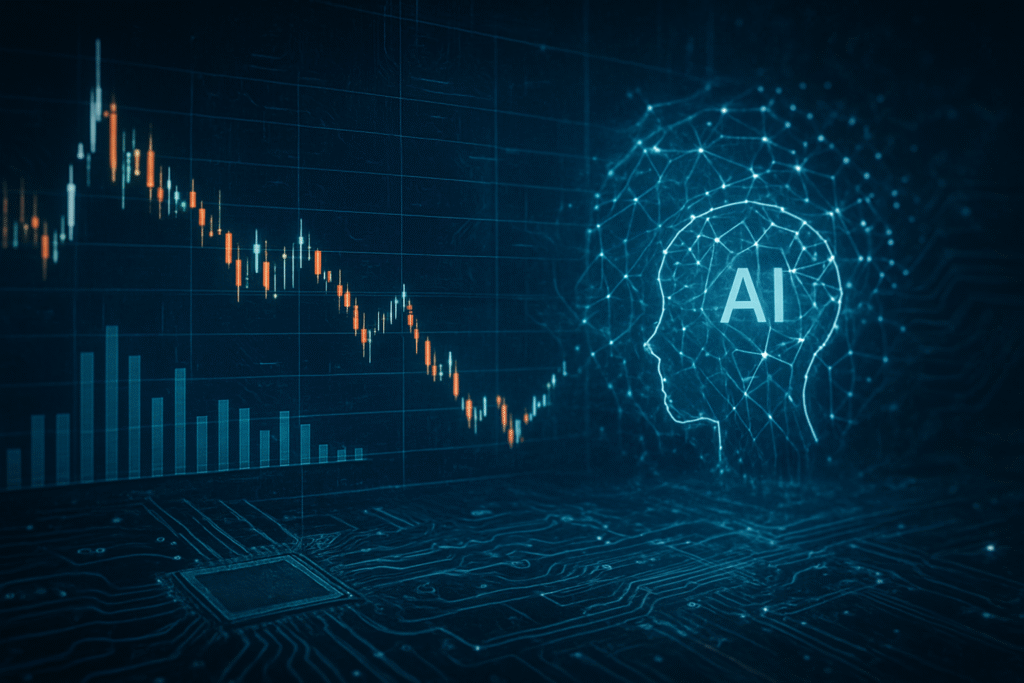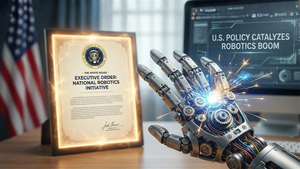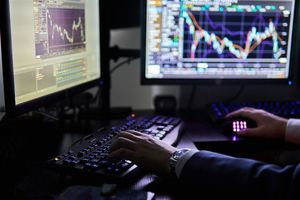
November 2025 has brought a significant recalibration to the tech and semiconductor sectors, as a wave of analyst downgrades has sent ripples through the market. These evaluations, targeting major players from hardware manufacturers to AI software providers and even industry titans like Apple, are forcing investors to scrutinize the true cost and tangible revenue generation of the artificial intelligence boom. The immediate significance is a noticeable shift in market sentiment, moving from unbridled enthusiasm for all things AI to a more discerning demand for clear profitability and sustainable growth in the face of escalating operational costs.
The downgrades highlight a critical juncture where the "AI supercycle" is revealing its complex economics. While demand for advanced AI-driven chips remains robust, the soaring prices of crucial components like NAND and DRAM are squeezing profit margins for companies that integrate these into their hardware. Simultaneously, a re-evaluation of AI's direct revenue contribution is prompting skepticism, challenging valuations that may have outpaced concrete financial returns. This environment signals a maturation of the AI investment landscape, where market participants are increasingly differentiating between speculative potential and proven financial performance.
The Technical Underpinnings of a Market Correction
The recent wave of analyst downgrades in November 2025 provides a granular look into the intricate technical and economic dynamics currently shaping the AI and semiconductor landscape. These aren't merely arbitrary adjustments but are rooted in specific market shifts and evolving financial outlooks for key players.
A primary technical driver behind several downgrades, particularly for hardware manufacturers, is the memory chip supercycle. While this benefits memory producers, it creates a significant cost burden for companies like Dell Technologies (NYSE: DELL), Hewlett Packard Enterprise (NYSE: HPE), and HP (NYSE: HPQ). Morgan Stanley's downgrade of Dell from "Overweight" to "Underweight" and its peers was explicitly linked to their high exposure to DRAM costs. Dell, for instance, is reportedly experiencing margin pressure due to its AI server mix, where the increased demand for high-performance memory (essential for AI workloads) translates directly into higher Bill of Materials (BOM) costs, eroding profitability despite strong demand. This dynamic differs from previous tech booms where component costs were more stable or declining, allowing hardware makers to capitalize more directly on rising demand. The current scenario places a premium on supply chain management and pricing power, challenging traditional business models.
For AI chip leader Advanced Micro Devices (NASDAQ: AMD), Seaport Research's downgrade to "Neutral" in September 2025 stemmed from concerns over decelerating growth in its AI chip business. Technically, this points to an intensely competitive market where AMD, despite its strong MI300X accelerator, faces formidable rivals like NVIDIA (NASDAQ: NVDA) and the emerging threat of large AI developers like OpenAI and Google (NASDAQ: GOOGL) exploring in-house AI chip development. This "in-sourcing" trend is a significant technical shift, as it bypasses traditional chip suppliers, potentially limiting future revenue streams for even the most advanced chip designers. The technical capabilities required to design custom AI silicon are becoming more accessible to hyperscalers, posing a long-term challenge to the established semiconductor ecosystem.
Even tech giant Apple (NASDAQ: AAPL) faced a "Reduce" rating from Phillip Securities in September 2025, partly due to a perceived lack of significant AI innovation compared to its peers. Technically, this refers to Apple's public-facing AI strategy and product integration, which analysts felt hadn't demonstrated the same disruptive potential or clear revenue-generating pathways as generative AI initiatives from rivals. While Apple has robust on-device AI capabilities, the market is now demanding more explicit, transformative AI applications that can drive new product categories or significantly enhance existing ones in ways that justify its premium valuation. This highlights a shift in what the market considers "AI innovation" – moving beyond incremental improvements to demanding groundbreaking, differentiated technical advancements.
Initial reactions from the AI research community and industry experts are mixed. While the long-term trajectory for AI remains overwhelmingly positive, there's an acknowledgment that the market is becoming more sophisticated in its evaluation. Experts note that the current environment is a natural correction, separating genuine, profitable AI applications from speculative ventures. There's a growing consensus that sustainable AI growth will require not just technological breakthroughs but also robust business models that can navigate supply chain complexities and deliver tangible financial returns.
Navigating the Shifting Sands: Impact on AI Companies, Tech Giants, and Startups
The recent analyst downgrades are sending clear signals across the AI ecosystem, profoundly affecting established tech giants, emerging AI companies, and even the competitive landscape for startups. The market is increasingly demanding tangible returns and resilient business models, rather than just promising AI narratives.
Companies heavily involved in memory chip manufacturing and those with strong AI infrastructure solutions stand to benefit from the current environment, albeit indirectly. While hardware integrators struggle with costs, the core suppliers of high-bandwidth memory (HBM) and advanced NAND/DRAM — critical components for AI accelerators — are seeing sustained demand and pricing power. Companies like Samsung (KRX: 005930), SK Hynix (KRX: 000660), and Micron Technology (NASDAQ: MU) are positioned to capitalize on the insatiable need for memory in AI servers, even as their customers face margin pressures. Similarly, companies providing core AI cloud infrastructure, whose costs are passed directly to users, might find their position strengthened.
For major AI labs and tech companies, the competitive implications are significant. The downgrades on companies like AMD, driven by concerns over decelerating AI chip growth and the threat of in-house chip development, underscore a critical shift. Hyperscalers such as Google (NASDAQ: GOOGL), Amazon (NASDAQ: AMZN), and Microsoft (NASDAQ: MSFT) are investing heavily in custom AI silicon (e.g., Google's TPUs, AWS's Trainium/Inferentia). This strategy, while capital-intensive, aims to reduce reliance on third-party suppliers, optimize performance for their specific AI workloads, and potentially lower long-term operational costs. This intensifies competition for traditional chip makers and could disrupt their market share, particularly for general-purpose AI accelerators.
The downgrades also highlight a potential disruption to existing products and services, particularly for companies whose AI strategies are perceived as less differentiated or impactful. Apple's downgrade, partly due to a perceived lack of significant AI innovation, suggests that even market leaders must demonstrate clear, transformative AI applications to maintain premium valuations. For enterprise software companies like Palantir Technologies Inc (NYSE: PLTR), downgraded to "Sell" by Monness, Crespi, and Hardt, the challenge lies in translating the generative AI hype cycle into substantial, quantifiable revenue. This puts pressure on companies to move beyond showcasing AI capabilities to demonstrating clear ROI for their clients.
In terms of market positioning and strategic advantages, the current climate favors companies with robust financial health, diversified revenue streams, and a clear path to AI-driven profitability. Companies that can effectively manage rising component costs through supply chain efficiencies or by passing costs to customers will gain an advantage. Furthermore, those with unique intellectual property in AI algorithms, data, or specialized hardware that is difficult to replicate will maintain stronger market positions. The era of "AI washing" where any company with "AI" in its description saw a stock bump is giving way to a more rigorous evaluation of genuine AI impact and financial performance.
The Broader AI Canvas: Wider Significance and Future Trajectories
The recent analyst downgrades are more than just isolated market events; they represent a significant inflection point in the broader AI landscape, signaling a maturation of the industry and a recalibration of expectations. This period fits into a larger trend of moving beyond the initial hype cycle towards a more pragmatic assessment of AI's economic realities.
The current situation highlights a crucial aspect of the AI supply chain: while the demand for advanced AI processing power is unprecedented, the economics of delivering that power are complex and costly. The escalating prices of high-performance memory (HBM, DDR5) and advanced logic chips, driven by manufacturing complexities and intense demand, are filtering down the supply chain. This means that while AI is undoubtedly a transformative technology, its implementation and deployment come with substantial financial implications that are now being more rigorously factored into company valuations. This contrasts sharply with earlier AI milestones, where the focus was predominantly on breakthrough capabilities without as much emphasis on the immediate economic viability of widespread deployment.
Potential concerns arising from these downgrades include a slowing of investment in certain AI-adjacent sectors if profitability remains elusive. Companies facing squeezed margins might scale back R&D or delay large-scale AI infrastructure projects. There's also the risk of a "haves and have-nots" scenario, where only the largest tech giants with deep pockets can afford to invest in and benefit from the most advanced, costly AI hardware and talent, potentially widening the competitive gap. The increased scrutiny on AI-driven revenue could also lead to a more conservative approach to AI product development, prioritizing proven use cases over more speculative, innovative applications.
Comparing this to previous AI milestones, such as the initial excitement around deep learning or the rise of large language models, this period marks a transition from technological feasibility to economic sustainability. Earlier breakthroughs focused on "can it be done?" and "what are its capabilities?" The current phase is asking "can it be done profitably and at scale?" This shift is a natural progression in any revolutionary technology cycle, where the initial burst of innovation is followed by a period of commercialization and market rationalization. The market is now demanding clear evidence that AI can not only perform incredible feats but also generate substantial, sustainable shareholder value.
The Road Ahead: Future Developments and Expert Predictions
The current market recalibration, driven by analyst downgrades, sets the stage for several key developments in the near and long term within the AI and semiconductor sectors. The emphasis will shift towards efficiency, strategic integration, and demonstrable ROI.
In the near term, we can expect increased consolidation and strategic partnerships within the semiconductor and AI hardware industries. Companies struggling with margin pressures or lacking significant AI exposure may seek mergers or acquisitions to gain scale, diversify their offerings, or acquire critical AI IP. We might also see a heightened focus on cost-optimization strategies across the tech sector, including more aggressive supply chain negotiations and a push for greater energy efficiency in AI data centers to reduce operational expenses. The development of more power-efficient AI chips and cooling solutions will become even more critical.
Looking further ahead, potential applications and use cases on the horizon will likely prioritize "full-stack" AI solutions that integrate hardware, software, and services to offer clear value propositions and robust economics. This includes specialized AI accelerators for specific industries (e.g., healthcare, finance, manufacturing) and edge AI deployments that reduce reliance on costly cloud infrastructure. The trend of custom AI silicon developed by hyperscalers and even large enterprises is expected to accelerate, fostering a more diversified and competitive chip design landscape. This could lead to a new generation of highly optimized, domain-specific AI hardware.
However, several challenges need to be addressed. The talent gap in AI engineering and specialized chip design remains a significant hurdle. Furthermore, the ethical and regulatory landscape for AI is still evolving, posing potential compliance and development challenges. The sustainability of AI's energy footprint is another growing concern, requiring continuous innovation in hardware and software to minimize environmental impact. Finally, companies will need to prove that their AI investments are not just technologically impressive but also lead to scalable and defensible revenue streams, moving beyond pilot projects to widespread, profitable adoption.
Experts predict that the next phase of AI will be characterized by a more disciplined approach to investment and development. There will be a stronger emphasis on vertical integration and the creation of proprietary AI ecosystems that offer a competitive advantage. Companies that can effectively manage the complexities of the AI supply chain, innovate on both hardware and software fronts, and clearly articulate their path to profitability will be the ones that thrive. The market will reward pragmatism and proven financial performance over speculative growth, pushing the industry towards a more mature and sustainable growth trajectory.
Wrapping Up: A New Era of AI Investment Scrutiny
The recent wave of analyst downgrades across major tech companies and semiconductor ETFs marks a pivotal moment in the AI journey. The key takeaway is a definitive shift from an era of unbridled optimism and speculative investment in anything "AI-related" to a period of rigorous financial scrutiny. The market is no longer content with the promise of AI; it demands tangible proof of profitability, sustainable growth, and efficient capital allocation.
This development's significance in AI history cannot be overstated. It represents the natural evolution of a groundbreaking technology moving from its initial phase of discovery and hype to a more mature stage of commercialization and economic rationalization. It underscores that even revolutionary technologies must eventually conform to fundamental economic principles, where costs, margins, and return on investment become paramount. This isn't a sign of AI's failure, but rather its maturation, forcing companies to refine their strategies and demonstrate concrete value.
Looking ahead, the long-term impact will likely foster a more resilient and strategically focused AI industry. Companies will be compelled to innovate not just in AI capabilities but also in business models, supply chain management, and operational efficiency. The emphasis will be on building defensible competitive advantages through proprietary technology, specialized applications, and strong financial fundamentals. This period of re-evaluation will ultimately separate the true long-term winners in the AI race from those whose valuations were inflated by pure speculation.
In the coming weeks and months, investors and industry observers should watch for several key indicators. Pay close attention to earnings reports for clear evidence of AI-driven revenue growth and improved profit margins. Monitor announcements regarding strategic partnerships, vertical integration efforts, and new product launches that demonstrate a focus on cost-efficiency and specific industry applications. Finally, observe how companies articulate their AI strategies, looking for concrete plans for commercialization and profitability rather than vague statements of technological prowess. The market is now demanding substance over sizzle, and the companies that deliver will lead the next chapter of the AI revolution.
This content is intended for informational purposes only and represents analysis of current AI developments.
TokenRing AI delivers enterprise-grade solutions for multi-agent AI workflow orchestration, AI-powered development tools, and seamless remote collaboration platforms.
For more information, visit https://www.tokenring.ai/.





